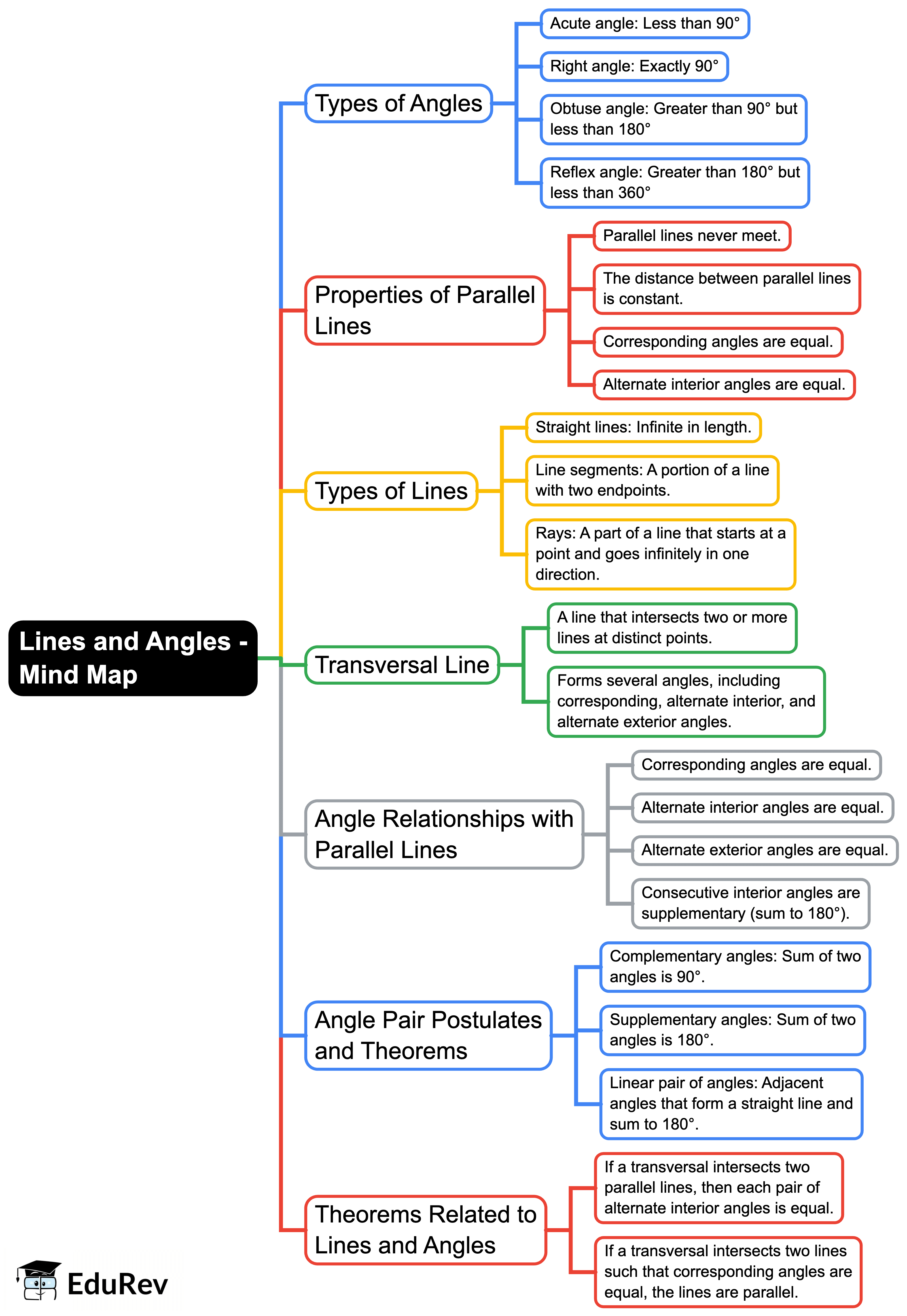Class 7 Exam > Class 7 Notes > Mathematics (Maths) Class 7 (Old NCERT) > Mind Map- Lines and Angles
Mind Map- Lines and Angles | Mathematics (Maths) Class 7 (Old NCERT) PDF Download

The document Mind Map- Lines and Angles | Mathematics (Maths) Class 7 (Old NCERT) is a part of the Class 7 Course Mathematics (Maths) Class 7 (Old NCERT).
All you need of Class 7 at this link: Class 7
|
77 videos|386 docs|39 tests
|
FAQs on Mind Map- Lines and Angles - Mathematics (Maths) Class 7 (Old NCERT)
| 1. What are the different types of angles studied in Class 7? |  |
Ans. In Class 7, students learn about several types of angles, including acute angles (less than 90 degrees), right angles (exactly 90 degrees), obtuse angles (greater than 90 degrees but less than 180 degrees), straight angles (exactly 180 degrees), and reflex angles (greater than 180 degrees but less than 360 degrees).
| 2. How do you measure angles using a protractor? |  |
Ans. To measure angles using a protractor, first, place the midpoint of the protractor at the vertex of the angle. Align one side of the angle with the zero line of the protractor. Then, read the measurement where the other side of the angle intersects the number scale on the protractor. Make sure to use the correct scale depending on whether the angle is acute or obtuse.
| 3. What is the relationship between complementary and supplementary angles? |  |
Ans. Complementary angles are two angles whose sum is 90 degrees, while supplementary angles are two angles whose sum is 180 degrees. For example, if one angle measures 30 degrees, its complementary angle would measure 60 degrees (90 - 30), and its supplementary angle would measure 150 degrees (180 - 30).
| 4. Can you explain the concept of vertically opposite angles? |  |
Ans. Vertically opposite angles are the angles that are opposite each other when two lines intersect. They are always equal in measure. For example, if two lines intersect and form angles of 40 degrees and 140 degrees, the angles that are opposite each other (the 40-degree angles) will be equal.
| 5. What are parallel lines, and how do they relate to angles? |  |
Ans. Parallel lines are lines in a plane that never meet and are always the same distance apart. When a transversal line crosses parallel lines, it creates several angles. The corresponding angles are equal, the alternate interior angles are equal, and the consecutive interior angles are supplementary (add up to 180 degrees).
Related Searches
















